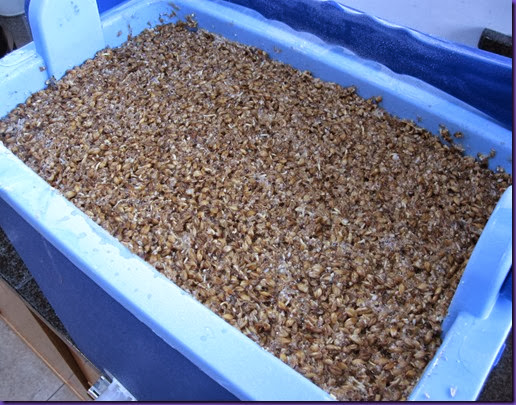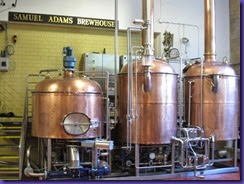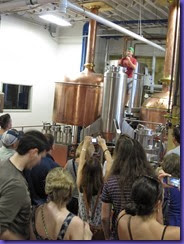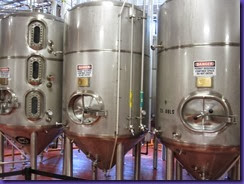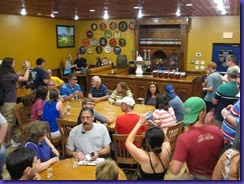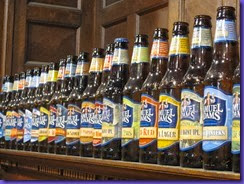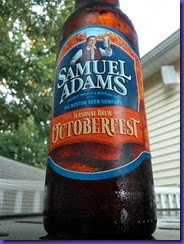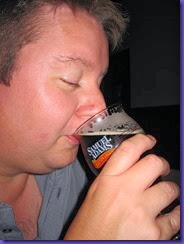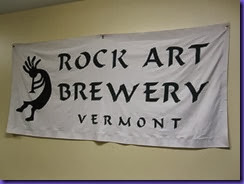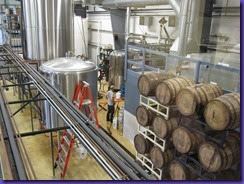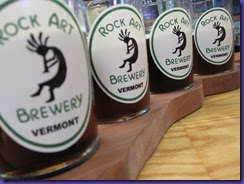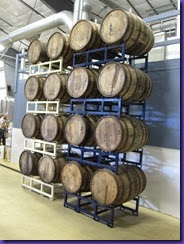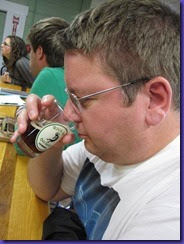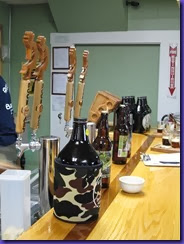When Andy was at university in the early 80s he used to drink a beer called Old Horizontal from the now defunct Stocks brewery in Doncaster. (This is not to be confused with a US beer with the same name from Victory Brewery, which is a very strong barley wine.)
Back when we first started making beer we had a go at recreating Stocks Old Horizontal based on the briefest of recipes from Roger Protz’s Real Ale Almanac. This was gyle (brew number) 7 in November 2010, so to be honest we didn’t really know what we were doing back then like we (think we) do now.
So we have decided to do it again. This post is about our decision making process on the recipe for tomorrow’s brew.
Let’s start with Andy’s “taste memory”. He dug the following up from the back of his mind:
- Looked like Guinness but not as black
- Relatively dry
- Not overly malty, not sweet malty
- Relatively bitter
- Not hoppy, no fragrance
- Not thin
OK, that’s a start. The Real Ale Almanac gives the following recipe:
- Original gravity 1054.7 (nice and accurate there!)
- 97% pale ale malt
- 3% chocolate malt
- Fuggles and goldings hops
There’s also a suggestion (here) that it was 5.3% ABV (although previously 5%).
This helps quite a lot, but doesn’t tell us anything about
- Bitterness
- Mash temperature (which affects final sweetness)
- Yeast (which has a big effect on flavour)
- Fermentation temperature (which also affects flavour, ie higher will result in more fruity beers because of the esters and the like produced as by-products)
- Hopping schedule – when they are added and how much (this affects bitterness but also hop flavour and aroma)
Back at gyle 7 we mashed at 64C – very low. We used 30g fuggles and 25g goldings for 80 minutes in the boil, followed by a further 10g fuggles in the last ten minutes. We used Safale S-04 yeast which would have given a fruity English flavour. It was November, so fermentation would have been at room temperature, 20C.
This time round we have made the following changes:
- Mash temp 66C – standard temperature for a dry beer
- 38 IBU – fairly bitter, but not aggressively so
- 25g fuggles and 25g goldings at 60 mins, and NO late hops, to reduce hop flavour and aroma
- Safale US-05 yeast – standard for beer where you do not want an English fruity flavour, such as American pale ales or Irish/Scottish ales
- No water treatment – Cheshire tap water
That’s it – we’ll brew it tomorrow and see if what we get is closer to Andy’s “taste memory”. I think the use of US-05 yeast and controlling the fermentation temperature to 19C will have the biggest effect – making it less fruity.
The full recipe is below, just in case that is of interest.
Stocks Old Horizontal
OG 1.054
FG 1.015
ABV 5.2%
Batch size: 26 litres
Malt
- 5000g maris otter pale ale malt
- 155g chocolate malt
Hops
- 25g fuggles (5.6% alpha acid) at 60 min (19 IBU)
- 25g goldings (5.2 alpha acid) at 60 min (19 IBU)
Water treatment: none
Mash schedule: 66C for 60 min
3g irish moss
Colour: 16 lovibond (21 SRM, 41 EBC)
Yeast: Safale US-05, 1 sachet
Fermentation: ~1 week at 19C
